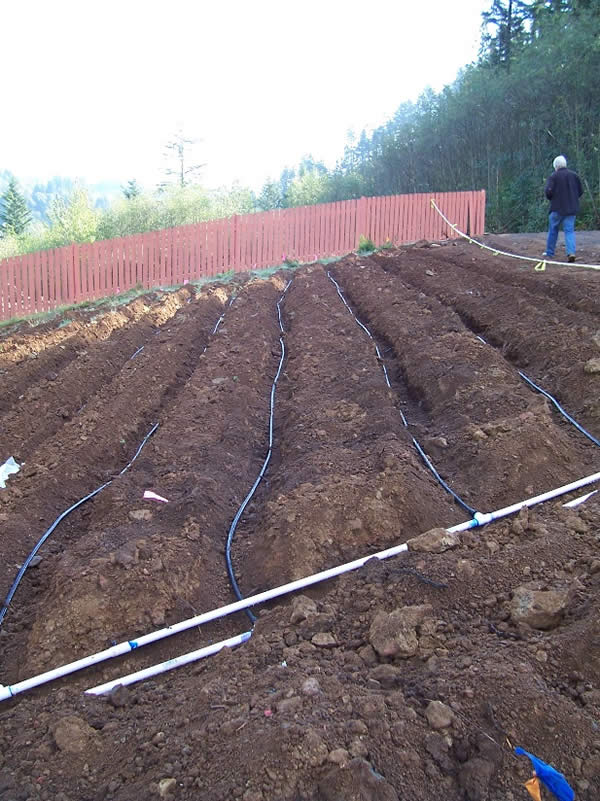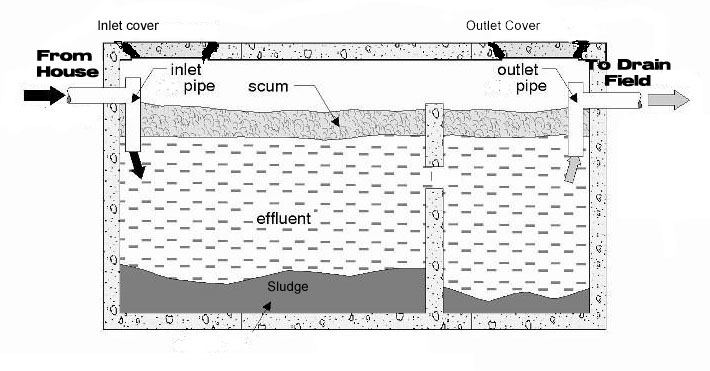
If allowed by your local building department, it is always best practice to divert household greywater to a separate leaching area. You want to encourage helpful good bacteria (digesting anaerobic cultures) to grow in your septic tank and organically treat the waste, not kill helpful bacteria with detergent laden graywater. Greywater from washing machine, sinks and showers contains soaps designed to kill bacteria (clean and disinfect things) and thus discourage optimal septic tank function. Not as effective treatment as a larger leach field, where sewage percolates slowly over a larger area, leach pits are an alternative for smaller properties only where high seasonal ground water is not present. A leach pit is a deeper, larger hole filled with rock for disposing of wastewater in a smaller footprint.
Septic tank and drain field layout series#
The typical leach field is a series of chambers or rock filled trenches where effluent is further treated as it slowly percolates through the soil. As incoming sewage from the house fills first compartment, clarified liquids are forced to leave the second chamber of the septic tank and flow out to the leach field or leach pit. Between these two scum layers is a zone of clarified liquid effluent which is internally piped to the second compartment of the septic tank for additional settling. Solid waste settles into a sludge layer on the bottom and fats float to the top of the first compartment. Effluent flows directly from your household plumbing into a watertight, underground, two compartment septic tank. Learn more about leach field issues and maintenance here.The wastewater your home produces is referred to as 'effluent' and consists of blackwater (toilet and garbage disposal waste) and greywater (shower, sink and laundry waste).
Septic tank and drain field layout professional#
For this reason, having your professional plumber come out to first properly diagnose the problem is so important. Some signs of a failed box could look very similar to a septic tank system blockage or a leach field issue. However, in the event of sludge buildup, tree root invasions, improper maintenance, heavy machinery on top of the box or other issues that can cause unrepairable damage to your distribution box, you may need to replace it. By being proactive, you can make minor adjustments or repairs as needed to hopefully prevent unnecessary large issues, failures, or backups.Ī concrete D-box can typically last up to 20 years. Inspections help to ensure that your system is working properly before major issues occur or warning signs are presented.


One of these parts that is often forgot about, or homeowners simply don’t know exists is the distribution box. Since septic tanks are buried underground, it’s easy to not really understand all of the moving parts within the system.


 0 kommentar(er)
0 kommentar(er)
